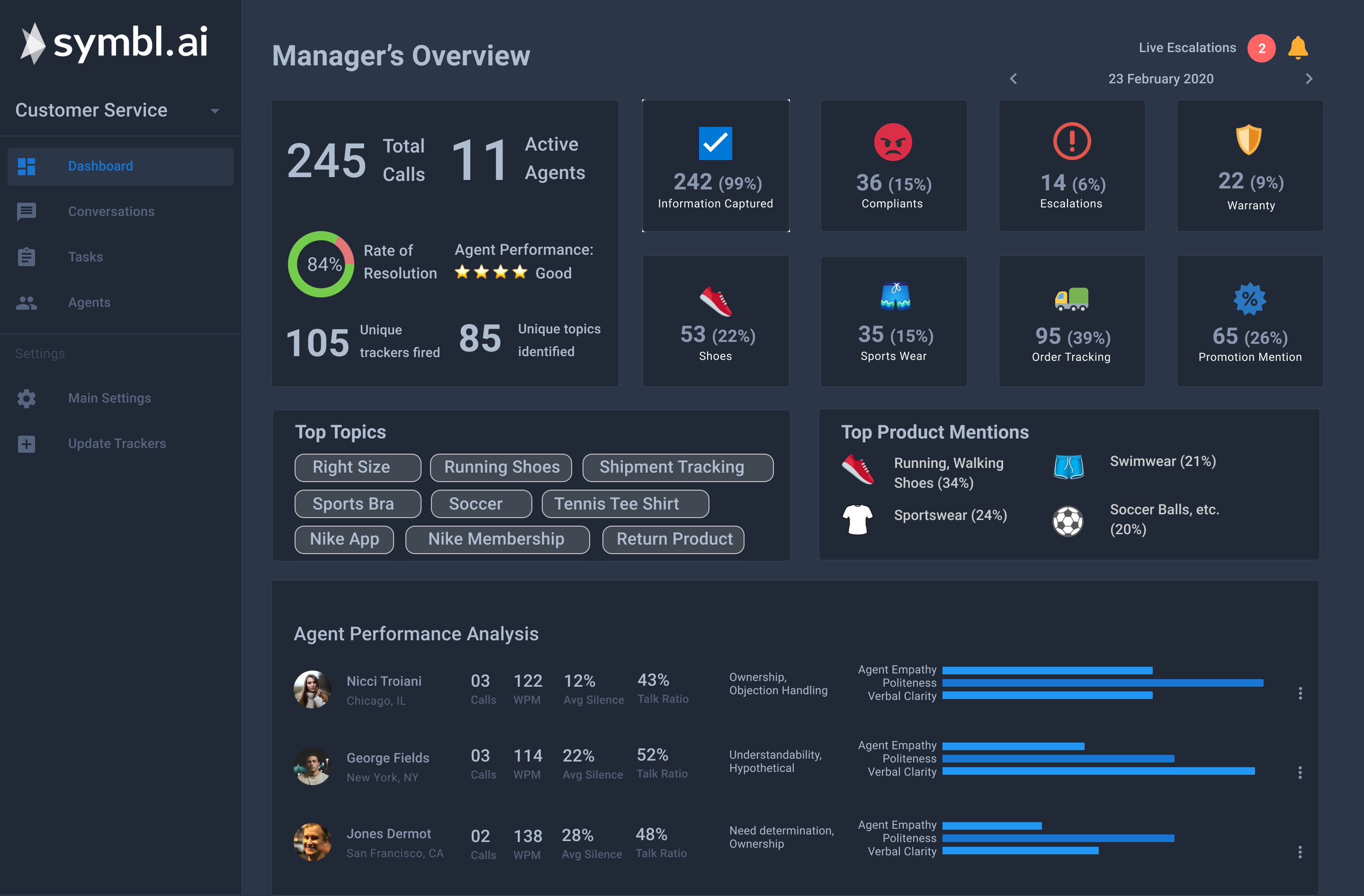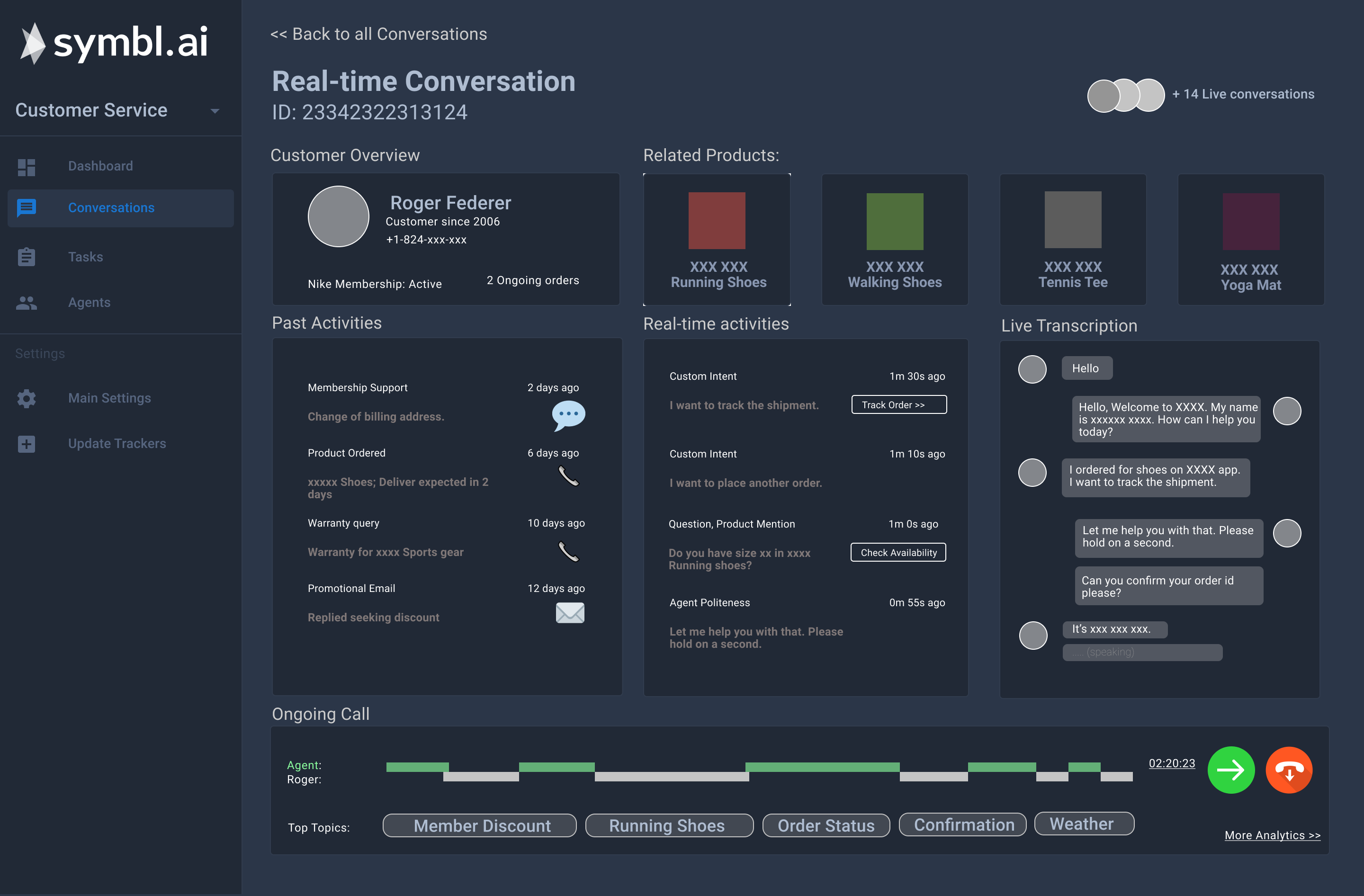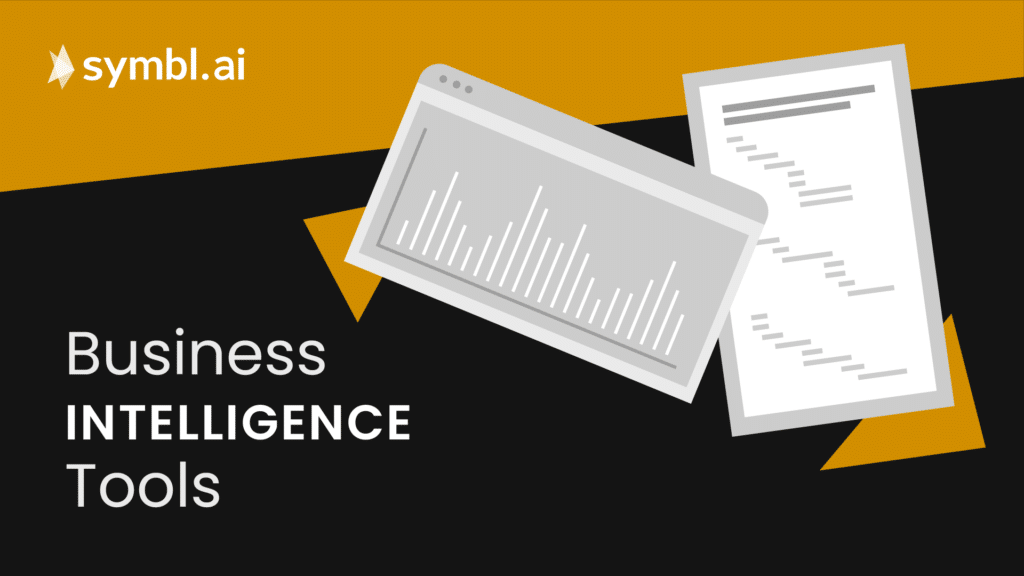Business intelligence systems can be augmented with help you unlock the data found within human to human conversations in a way that makes it easy to see the patterns and connections.
Business intelligence (BI) systems have been helping companies make highly informed decisions that are backed by data for decades. These systems ingest the data that you have in your business (either in real-time or asynchronously) and present it in dashboards that make it easy to see the patterns and trends that exist within your company.
Depending on the data that gets fed into a BI system, you can use these platforms to determine everything from the most common time of day that people purchase your products to the kinds of emails that drive the most sales for your business.
When you think beyond the more traditional types of data that you can use in a BI, the use cases grow. At Symbl.ai, we’re big fans of using data found within human to human (H2H) conversations. This data can unlock a whole range of insights, like trending topics with sentiments and flag critical business insights around a specific promotion or offer in real time.
Combining conversation analytics to existing and new BI data
Adding conversation analytics to your BI platform opens up a whole new level of understanding of how your business is operating. If you’re accurately capturing audio recordings, video files, emails or even other forms of conversations and processing it using a conversation intelligence system like ours, you can uncover insights that add a new layer of understanding how your business is operating.


To do this, you need to be able to take the data you’ve captured and push it towards your BI systems.
What happens when you integrate BI and conversation intelligence
Businesses that have a BI system in place and are collecting customer conversation data at scale have a lot to gain by integrating the two. Doing so allows you to create conversation intelligence systems that offer all the benefits of BI provides (better access to data and information) combined with the intelligence needed to understand trends and gain actionable insights at scale.
The contextual understanding that the conversation intelligence system brings to the table allows you to access more granular aspects of the conversation data that you may need in real-time or for a historic view of large volumes of conversation.
How you can use this data
Once you’ve got your data in your BI system, you gain access to powerful insights that are available in real time. This data can be used in a variety of use cases across different industries:
- Distance learning or online education – If you’re using a software application to run remote courses, training, or school classes in parallel for a large number of students or attendees, understanding how effective the content is can be tough. It’s often not until test results come back that you realize what’s been working and not working. By feeding conversation data into a BI system, you can see which teachers or instructors are delivering the best results at scale, who are answering the questions students are asking in the most effective way, and even which teachers are getting more questions. This information can be used to guide who teaches what subjects, what information is currently missing from the curriculum, and what needs to be covered most during exam reviews. Furthermore, such systems can provide real-time alerts when profanity is detected and ensure compliance in real time across the content.
- Sales calls – Conversation intelligence helps you understand how the various members of your sales team are doing at scale. BI platforms, when augmented with conversation analytics can provide you a detailed look at the kinds of questions that are being asked, what the most effective answers are, and who’s using the best techniques when it comes to closing deals. Having this information displayed visually makes it easier to see the patterns as they’re emerging in real time and allows your sales reps to act on them in the moment when the sales conversation is happening.
- Telehealth – Conversation intelligence can help you better identify which questions and symptoms from patients are likely to lead to certain diagnoses. A BI platform can provide an easy-to-follow large scale representation of the ongoing conversations on telehealth platforms with identification of key symptoms and common diagnoses based on the questions that are being asked. Along with better diagnostics, it also becomes possible to notice localized (or not-so-localized) outbreaks faster based on the data coming from the conversations.
Ready to integrate voice data into a BI system?
At Symbl.ai, we’re big fans of making sure that you get the most of your voice or video conversation data you’re capturing from calls, meetings or sessions. Symbl.ai’s APIs make it possible to easily capture and analyze the conversations at scale, both asynchronously and in real time.
Symbl.ai’s Streaming API gives you the power to add a new form of data and insights from voice and video to your existing BI coverage. The Symbl.ai platform APIs make it very easy to integrate this intelligence in your current systems by removing the need to build machine learning models or custom data pipelines in your business. Symbl.ai makes it possible to get real-time, actionable insights from your BI system where traditional data sources can be combined with all the sources of conversation and visualized under common themes.
If you’d like to learn more about how conversation intelligence can help, our documentation is a great place to start.
Additional Reading
Symbl.ai documentation – Conversation Analytics
Building a Conversation Intelligence System
The 5 Dimensions of Conversation Intelligence
